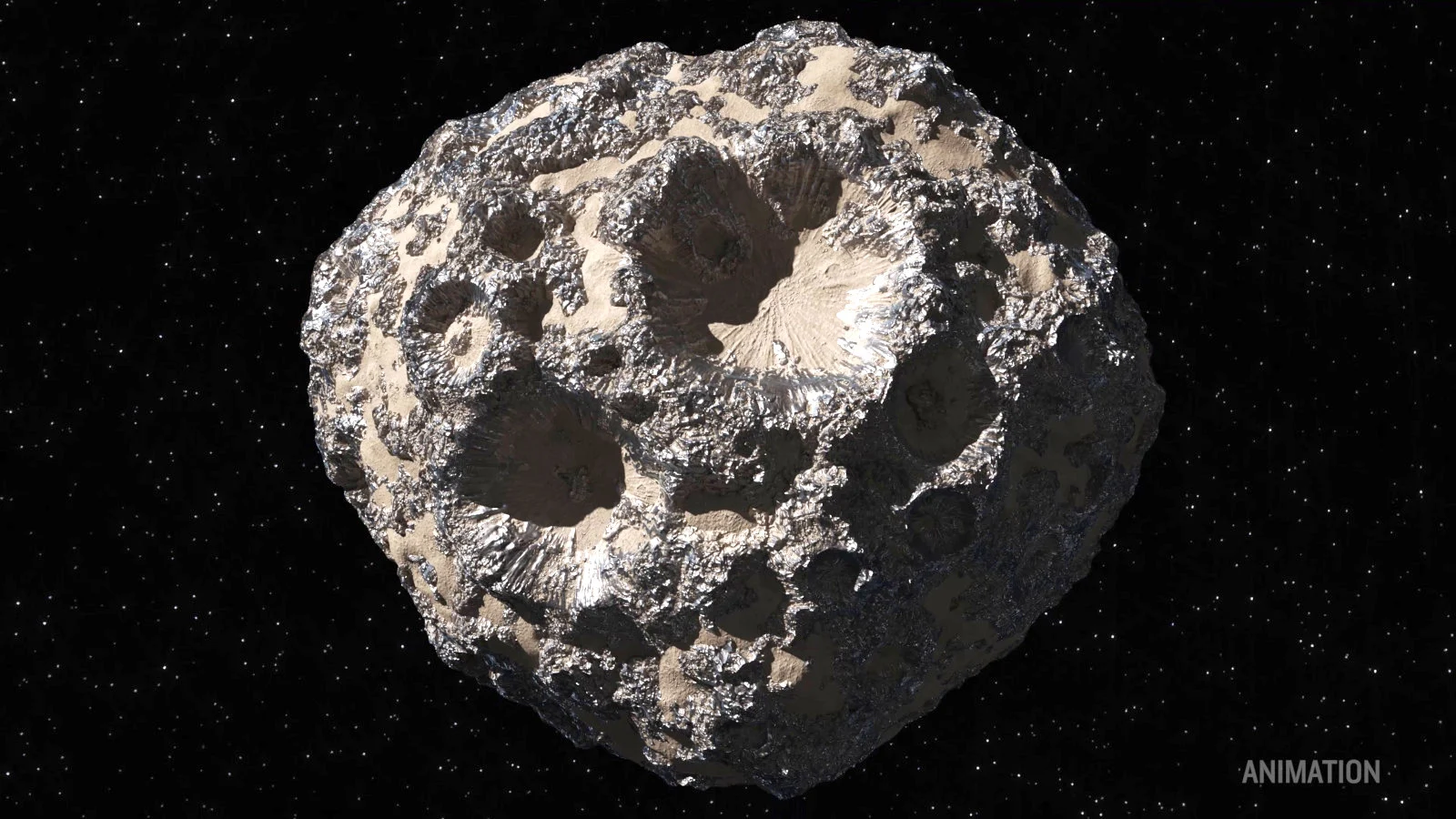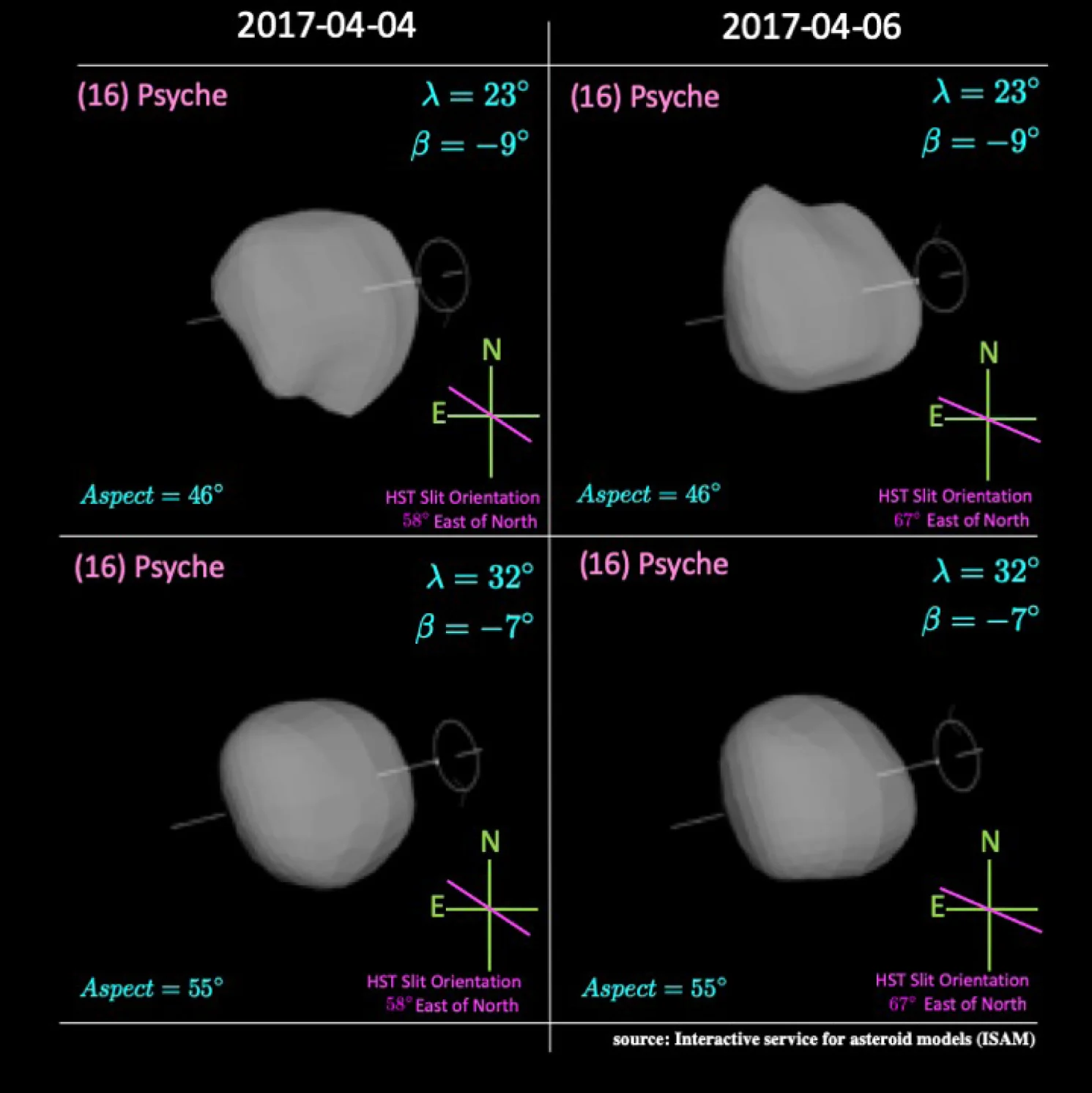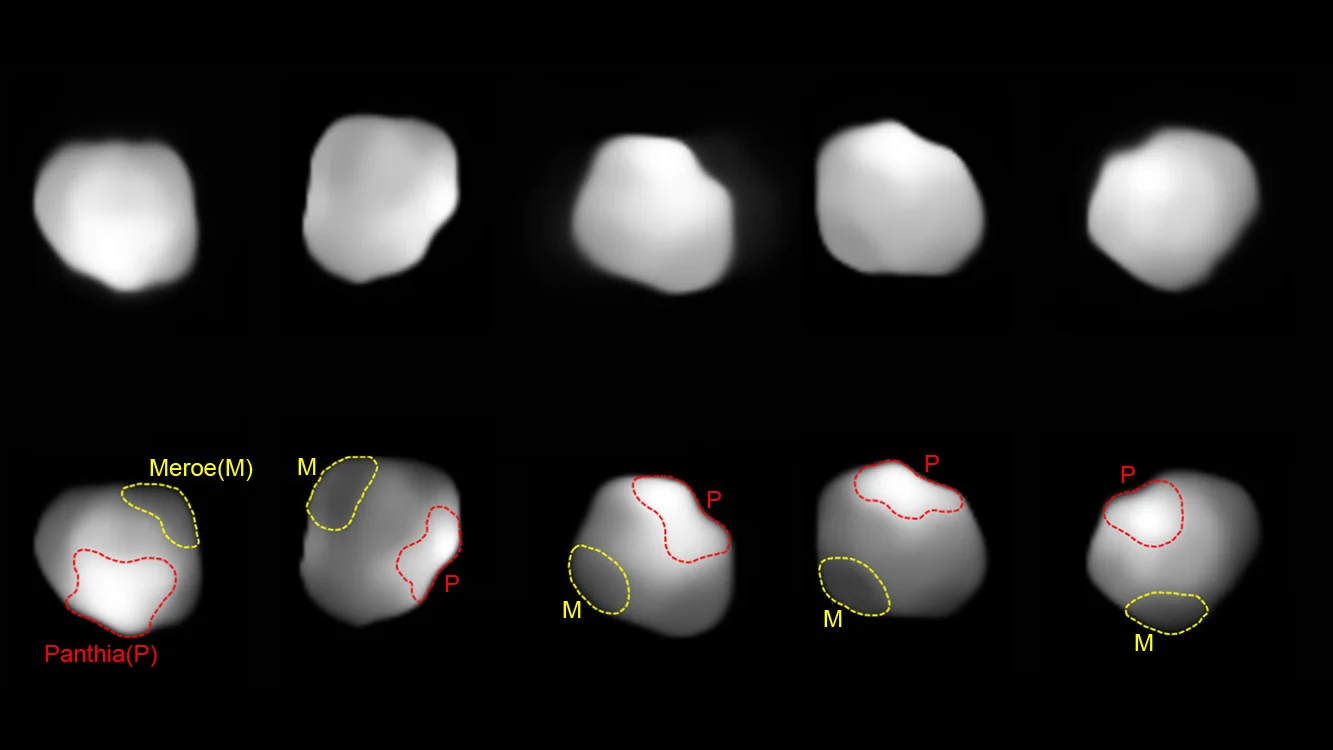
Hubble reveals Psyche, an asteroid worth $10 quintillion, may be corroding
This massive metal asteroid may be the leftover core of a planet destroyed long ago.
There are well over three-quarters of a million known asteroids in the solar system. One, among them, appears to be unique. 16 Psyche, a massive chunk of iron and nickel over 200 kilometres across, offers us an extraordinary opportunity. By examining this rare specimen, it grants us the chance to study the inner core of Earth.
Discovered nearly 170 years ago, orbiting the Sun inside the asteroid belt between Mars and Jupiter, 16 Psyche is thought to be the exposed iron core of an ancient protoplanet. From its size and its likely composition, it has an estimated worth of around $10,000,000,000,000,000,000 ($10 quintillion).

This artist's impression of 16 Psyche is based on telescopic surveys of the distant iron asteroid. Two exceptional features, the large craters Meroe and Panthia, are each roughly 90 km across. Credit: Maxar/ASU/P. Rubin/NASA/JPL-Caltech
"We've seen meteorites that are mostly metal, but Psyche could be unique in that it might be an asteroid that is totally made of iron and nickel," said Dr. Tracy Becker, the lead author of a new study of 16 Psyche using the Hubble Space Telescope, according to the Southwest Research Institute (SwRI).
"Earth has a metal core, a mantle and crust," Becker explained. "It's possible that as a Psyche protoplanet was forming, it was struck by another object in our solar system and lost its mantle and crust."
RELATED: SEE A NASA SPACECRAFT COLLECT SAMPLE FROM ASTEROID BENNU
Rather than image the asteroid in visible light or infrared, as had been done before, Becker and her team used Hubble to gather the very first ultraviolet views of 16 Psyche. This is a focus of Becker's work as a planetary scientist at SwRI, where she studies asteroids, Jupiter's moons, and Saturn's rings in UV light. Using that wavelength, which is invisible to our eyes, can reveal the tell-tail signs of what an object's surface is made of.
While more work is needed to decipher exactly how much of 16 Psyche's surface is iron, they did find something exciting. The asteroid appears to be corroding.

These simulations show the orientation of 16 Psyche during the Hubble observations, including the asteroid's axis of rotation. Credit: Becker, et al./The Planetary Science Journal
"We were able to identify for the first time on any asteroid what we think are iron oxide ultraviolet absorption bands," Becker said in the SwRI press release. "This is an indication that oxidation is happening on the asteroid, which could be a result of the solar wind hitting the surface."
The solar wind is a constant stream of charged particles that flows away from the Sun, out into the solar system. As these charged particles strike the surface of an object in space, they react with the materials there. This isn't necessarily the rust we are familiar with here on Earth, which is only one of several forms of iron oxide. However, the asteroid's surface does appear to be undergoing what's known as 'space weathering'.

This composite of images taken in 2018 show 16 Psyche from various angles, as imaged by the ESO's Very Large Telescope in northern Chile. The top row shows the unannotated versions, while the bottom row indicates craters Meroe and Panthia. Credit: ESO/LAM
"What makes Psyche and the other asteroids so interesting is that they're considered to be the building blocks of the solar system," Becker said. "To understand what really makes up a planet and to potentially see the inside of a planet is fascinating."
Soon, researchers will have the opportunity to see 16 Psyche from much closer. NASA is scheduled to launch a new exploration mission, called Psyche, sometime in 2022. After four years of travelling through space, the Psyche probe will arrive at the asteroid and spend at least a year orbiting it to determine if it really is an exposed planet core.

This artist impression shows the Psyche spacecraft in orbit around its asteroid namesake. Credit: NASA/JPL-Caltech/Arizona State Univ./Space Systems Loral/Peter Rubin
"Once we get to Psyche, we're really going to understand if that's the case, even if it doesn't turn out as we expect," Becker said. "Any time there's a surprise, it's always exciting."
